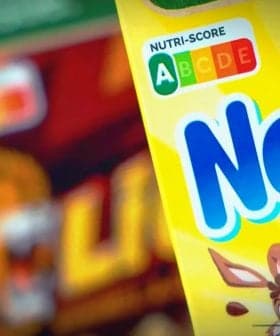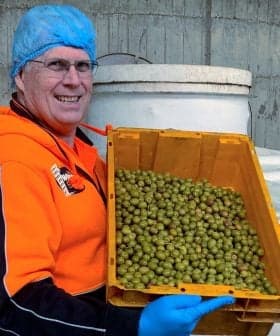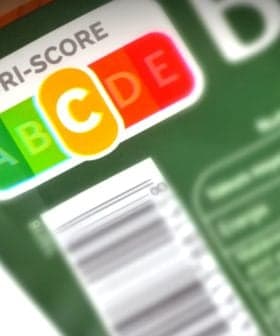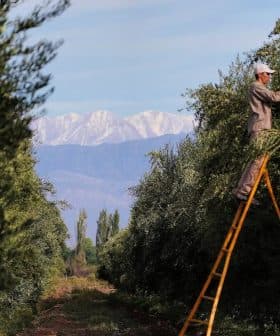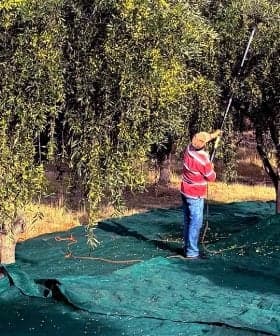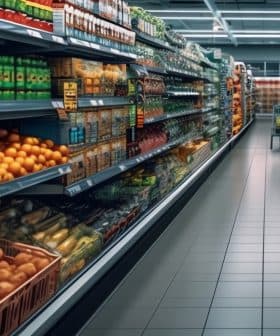New Labeling Laws for Australian Extra Virgin Olive Oil Producers
The laws are the result of consumer pressure following a hepatitis A outbreak in Australia in February 2015 that was linked to contaminated Australian-packaged frozen berries imported from Canada and China.
New country of origin labeling laws under Australian Consumer Law require extra virgin olive oil producers and exporters to Australia to display the country of origin on labels, including a graphical bar showing the percentage of Australian ingredients. The laws were implemented following consumer pressure after a hepatitis A outbreak in Australia in 2015, and the new regulations aim to provide clarity and transparency for consumers regarding the origin of EVOO products. Compliance with the new labeling laws involves updating packaging and labeling, which can be a costly process for producers.
Under Australian Consumer Law extra virgin olive oil producers — as well as EVOO exporters to Australia — have to comply with new country of origin labeling laws that came into effect on July 1.
The new laws will make more clear that any non-Australian added ingredients are included by the use of the graphical bar showing the percentage of Australian ingredients and the use of the ‘made in’ claim instead of the ‘product of’ claim.
The new labeling laws, which stipulate EVOOs imported to Australia need to display their country of origin in a text statement on labels, give exporters to Australia the option of including a shaded bar chart on labels indicating the percentage of Australian grown or produced ingredients if applicable.
These laws are the result of consumer pressure following a hepatitis A outbreak in Australia in February 2015 that was linked to contaminated Australian-packaged frozen berries imported from Canada and China.
The president of the Australian Olive Oil Association, David Valmorbida, told Olive Oil Times: “In situations where producers may be infusing Australian EVOO with other ingredients that may be non-Australian, the new laws will make more clear that any non-Australian added ingredients are included by the use of the graphical bar showing the percentage of Australian ingredients and the use of the ‘made in’ claim instead of the ‘product of’ claim.”
According to the Australian Competition and Consumer Commission (ACCC) website, the term “product of Australia” indicates a product is produced in Australia consisting of 100 percent Australian ingredients.
The ACCC website lists four country of origin claims on “priority food” — which includes EVOO — namely “grown in,” “produced in,” “made in” and “packed in.”
“Grown in” is used mainly for fresh foods and indicates the origin of the ingredients. This claim can also be used for multi-ingredient products to indicate where the ingredients were grown and processed.
“Produced in” is used to indicate the source of the ingredients and the location of processing.
“Made in” indicates the country in which the product was made.
“Packed in” indicates the country the product is packed in. This claim is used on labels of products that have not been grown, produced or made in a single country.
The new laws stipulate the green-and-gold Australian Made, Australian Grown (AMAG) triangle kangaroo logo is mandatory on Australian grown, produced or made EVOO labels. Extra virgin olive oil producers had to formerly obtain licenses from government-contracted NPO Australian Made Campaign Limited (AMCL) to use the AMAG logo.
Since July 1 the AMAG kangaroo logo is no longer allowed to be used as a standalone logo on EVOO labels but needs to be incorporated into a panel on the new country of origin labels.
According to the ACCC website; “non-priority” foods such as sweets, coffee and alcoholic beverages that are grown, produced, made or packed in Australia or elsewhere; are required to display a text statement on labels stating the country of origin.

Australia Labeling
Even if these “non-priority” foods have been grown, produced, made or packed in Australia; they are not required to display the AMAG kangaroo logo on their labels.
A bar chart on the label indicating the percentage of Australian produce, if any, in a product is mandatory on priority foods labels, but optional on non-priority food labels. The bar chart needs to be accompanied by a text statement indicating the percentage of Australian ingredients.
EVOO that was packaged and labeled on or before June 30 can still be sold without the new labels.
Explaining the unique geographical identity of Australian EVOO, Valmorbida told Olive Oil Times: “Australian EVOO is well regarded globally in terms of quality and also the diversity of olives being grown in our country.”
“Being a large country with olive growing occurring in a number of areas, there is an opportunity for regional identity to be developed and marketed for high-quality Australian EVOOs,” he added.
“Despite being a small producer on the global scale, the extensive application of latest production methodologies and technology combined with the available area and possible regional diversity sets the Australian industry in a great position to grow into the future with a strong reputation for consistent production volumes and high product quality,” Valmorbida said.
“Most commonly Australian olive oil is only ever sold as 100 percent Australian — not as a blend of other countries,” he said, “so the new graphical representation of the country of origin will merely provide added emphasis and ease of understanding to consumers that these products are indeed 100 percent ‘product of Australia’.”
In response to the new labeling laws; South Australian EVOO producer, Elisi Grove owner Leon Bettio, told Olive Oil Times: “Knowing these laws were coming in since last year, and having undergone a rebrand including designing new labels, we simply had the new country of origin logos incorporated into the labels since last year. It appears that more Australian consumers are interested in supporting local EVOOs that they consider to be good quality, so being able to clearly see it on the label should make it easier for them to do so.”
Asked whether it has been simple for Australian EVOO producers to comply with the new labeling laws, Valmorbida said: “Admittedly, there is the important task and cost of updating packaging and labeling to comply with the new laws.”
- Australian Olive Oil Association
- Australian Competition and Consumer Commission (ACCC)
- Australian Made Campaign Limited (AMCL)


